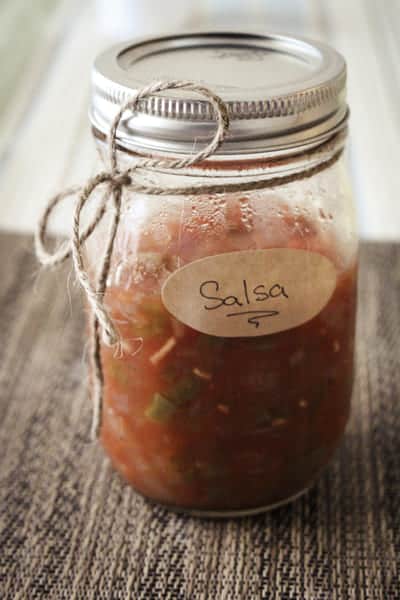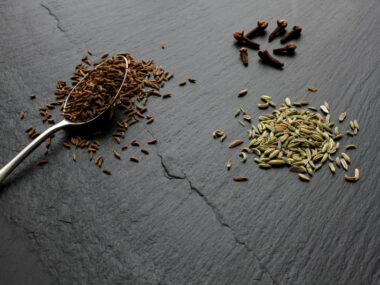Mexican cuisine is one of the diverse cuisines. However, what makes it even more special is the wide selection of sauces that enhance the taste of foods.
The most loved sauces are the Picante and Salsa. Nowadays, these are commonly used as dips as they were originally introduced in the US. So, what is the difference between Picante and salsa? The major difference between the two is the texture.
Picante sauce is more liquid giving it a soupier and thinner texture whereas salsa is thicker and has a chunky texture.
This article will help you understand a lot about these two popular sauces. Moreover, it will also help you know where to use them. So, read on!
What is Picante?
Picante is derived from the Spanish word “Picar” which means “to sting”. It is a sauce made from hot peppers. Hence, it has the name Picante which means spicy or hot.
The inventor of the Picante sauce was David E. Pace.
He developed a mixture of tomatoes, hot peppers like jalapeños, and onions. He also used two varieties of jalapeños (hot and mild) to produce two distinct flavors of the Picante sauce.
Today, you can use this sauce as a dip or in your own recipes. It also comes in 4 different spice levels that are mild, medium, and hot.
Picante can be considered as the modern-day salsa or the sub-type of salsa.
What is Salsa?
Salsa is derived from the Spanish word “sauce”.
The origin of salsa takes us back to the Aztec, Incas, and the Mayans, who for the first time used a combination of tomatoes and hot peppers to come up with something we call “Salsa”.
People think that salsa is just a mix of tomatoes but it has many other ingredients such as corn, avocado, chilies, pineapple, and so on.
You may find salsa in raw or cooked form. Some people use fresh ingredients whereas others prefer cooked ingredients.
Salsa makes a perfect dip for tortillas and tacos. You can also pour it over stew grilled beef or steak, roasted chicken, and any other dish you may prefer.
Picante vs. Salsa: Comparison Chart
The comparison table given below will help you understand the key differences between Picante and Salsa.
| Category | Picante sauce | Salsa |
| Origin | Mexico | Mexico |
| Taste | Picante is hot and spicy | Salsa has a mild taste to it |
| Texture | It is usually light and thin in texture like that of red sauce | Salsa has a thick and chunky texture |
| Ingredients | The ingredients used here are usually cooked | The ingredients used are fresh or raw |
| Uses | It is used to make the dish hot and spicy and also as a dip | Salsa can be used for the dips as well as the main dish |
| Shelf life | Lasts for 2 months | One or two weeks |
Picante vs. Salsa: What’s the Difference?
Now that you’re familiar with some of the main differences between Picante and Salsa, let’s dive into more details.
Origin
Though Picante and salsa share the same origin, they do differ as to how they evolved.
David Pace came up with Picante as he took salsa and started experimenting by adding different ingredients. Then, he came up with different forms of salsa, one of which was Picante.
Salsa was discovered by a group of people who used a mix of tomatoes, herbs, and other spices. A Spanish priest finally named it Salsa.
Taste
Picante is a hot and spicy sauce made out of crushed hot peppers such as jalapeños. On the other hand, Salsa is mild and not as spicy as compared to the Picante sauce.
Texture
Picante sauce is thin in texture and is prepared by peeling the tomatoes to achieve a smooth consistency. Many people also grind the onion and other peppers to get the required texture. Salsa is usually thick but it varies according to the preparation and cooking method used.
Ingredients
To prepare Picante, you have to use cooked ingredients like bell pepper and chilies. But, in the case of salsa, you should go for raw or fresh ingredients such as tomatoes, peppers, and onions. They add a lovely touch to the sauce.
Uses
If you have good spice tolerance, Picante sauce is a good option since it is spicy and hot. It is used in tacos, burritos, etc. Salsa on the other hand is a mild option and works well in spaghetti, pasta, tacos, etc.
Shelf life
Picante sauce can last up to 2 months after the expiry date. If opened it lasts for about 2 weeks as long as it is refrigerated and stored in an airtight container.
Once you’ve opened a jar of salsa it can be safe to consume within 2 weeks whereas unopened salsa can last about 2 months.
If the salsa is homemade it will last between 5 and7 days. However, this also depends on the ingredients used.
Can I Substitute Picante Sauce for Salsa?
You can substitute Picante sauce for salsa as it’s basically its sub-type. Just note that Picante sauce is spicier in nature. Hence, you can use it if you want to make your food spicy.
It can not only be used as a dip but also as a condiment for tacos and other foods!
Another thing to keep in mind is the food for which you can want to substitute Picante for salsa. For example, making your pasta using the Picante sauce will result in a too spicy dish.
Related Questions
What is Picante sauce used for?
Picante sauce can be used as a dip. However, you can also use it as a condiment for your tacos and burritos. It is much spicier compared to salsa.
What is the difference between Pace Salsa and Pace Picante?
The difference between the two is that Pace Picante is spicier than Pace Salsa. However, the ingredients almost remain the same. Pace Picante and Pace Salsa come from the same company and just vary in taste and texture.
What is the difference between Picante Sauce and Chunky Salsa?
Chunky salsa is also known as fresh salsa prepared using chunks of tomatoes, onions, lime, and jalapeños. Picante sauce is a paste made out of all the ingredients. Chunky salsa includes finely chopping the ingredients only.
Is Pace Picante Sauce a salsa?
Pace Picante is a type of salsa. You can consider salsa as the main form whereas Picante is only a sub-type of salsa made by combining various ingredients.




